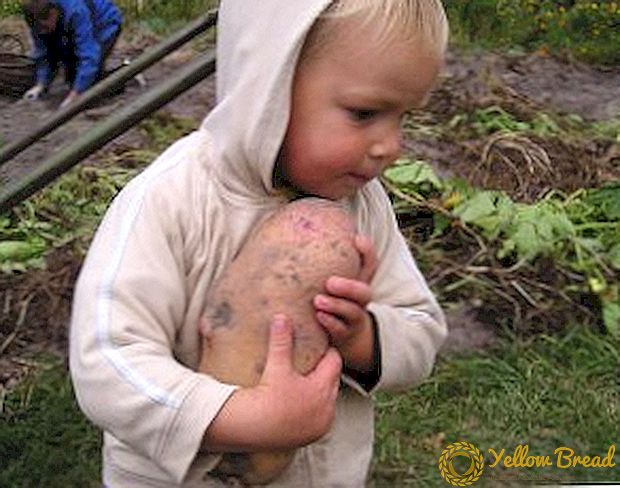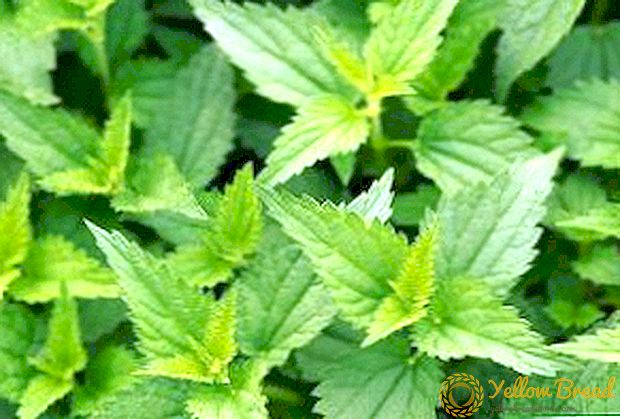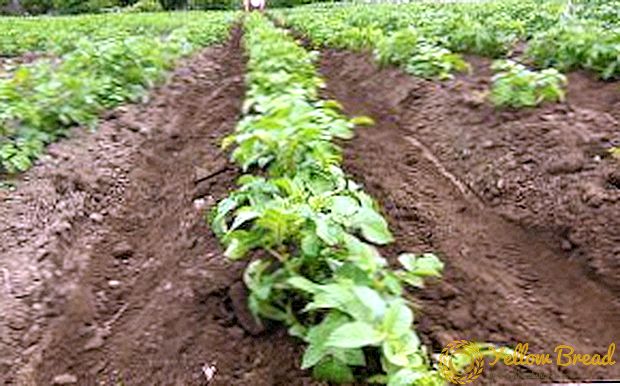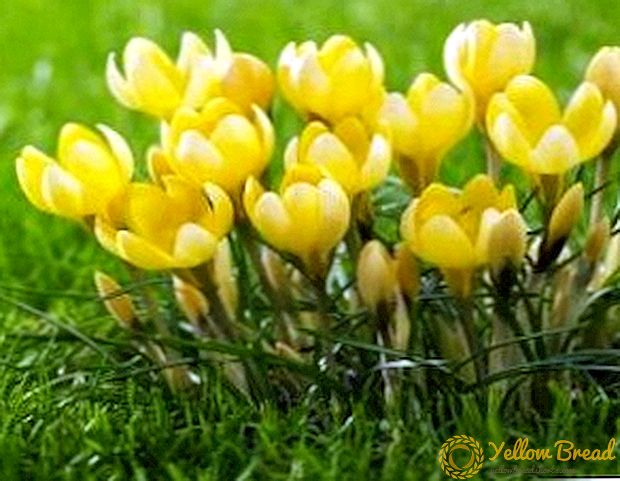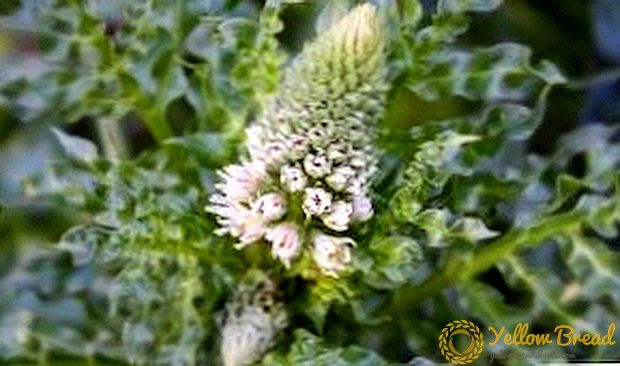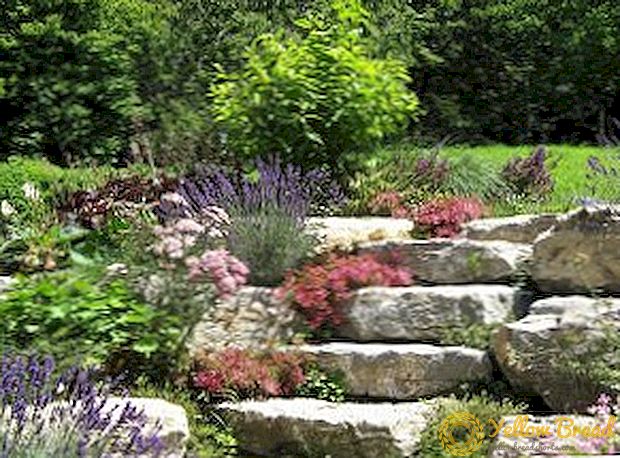
Without proper soil preparation, it is impossible to grow first-class seedlings of pepper.
Trade offers many different soil mixtures, but experienced gardeners strongly recommend preparing the soil for seedlings on their own.
The topic of today's article is an ideal ground for peppers: for seedlings and for planting strong seedlings. Preparing the soil for pepper seedlings with your own hands.
Right ground
Good land for planting should:

- be loose, light, with a porous structureto ensure free access of air and water;
- contain life-giving microfloraorganic matter;
- keep in optimal proportions for seedlings potassium, nitrogen, phosphorus, iron, copper, zinc;
- match the composition of the soil in which the pepper will be grown;
- permeable to moisturewithout forming a superficial crust;
- have an adequate pH neutral for peppers pH ~ 5-7. Such acidity protects the peppers from the disease of the black leg and kila.
A good land should not:
- be infected with weeds, larvae, pest eggs, worms, fungal spores, toxic substances, pathogens, rotting organic substances;
- have clay.
The soil composition, ideal for seedlings of pepper, contains oxides of phosphorus and potassium, sulfur, boron, molybdenum, zinc, iron, copper, manganese, magnesium, and calcium in correctly maintained proportions.
Seedlings
How to cook land for pepper seedlings:
- On one part: sand, peat, humus, earth.
- Sod, garden land, compost, sand - in equal shares. Add wood ash at the rate of a glass per 10 kg of compound.
- Equally lowland peat, humus. Enrich with potassium sulfate and superphosphate.
- One measure of compost (peat), sand (perlite), two turf.
- To one part, mixed equally between sawdust and sand, add three lobes of sod soil.
- Equally sheet and sod land, the same amount of humus, some sand, vermiculite, perlite to choose from.
- Land, humus, sand, wood ash.
- Sod ground, river sand, peat mixed in equal proportions, pour a bucket of water with superphosphate, potassium sulfate (30 g) and urea (10 g).
- Earth, humus, peat in the same volume, half a liter of wood ash, 2 matchboxes of supersphosphate.
Details on blend components

Peat
Used as a baking powder. Most of the soil mixture requires peat additives. There are three types:
- lowland: not sour, rich in nutrients;
- transition;
- surfacerequiring enrichment with lime or ash. Phosphate and magnesium fertilizers are welcome.
For the enrichment of peat, it is recommended to add 2% phosphate fertilizer. Then the effect will be greater.
Coarse sand
Provides the correct drainage, contributes to the formation of the supporting part of the bush. Makes the soil porous, light.
Turf
To saturate the soil mixture, improving the structure in the summer-autumn period, the upper soil layer is removed along with the grass. Stowed in boxes. Warm up before use.
Sphagnum mosses
Increase moisture content. Possessing bactericidal qualities, prevent rotting of the seedling root system.
Sawdust
Wood waste additives facilitate soil, increase its permeability.
Compost
Contains humus, so necessary for the successful development of seedlings. Increases fertility, ventilation.
Perlite
 When growing seedlings in mixtures containing a substance of volcanic origin, reduces the risk of fungal diseases, seedling rot. Protects against the formation of lumps, caking, tamping, temperature changes.
When growing seedlings in mixtures containing a substance of volcanic origin, reduces the risk of fungal diseases, seedling rot. Protects against the formation of lumps, caking, tamping, temperature changes.
Vermiculite
Crushed Laminated Mineral saves from drying out.
Ash
Experienced gardeners prefer birch.
Land preparation for seedlings of peppers
At the end of summer and autumn, the available components should be stored: ground, turf, peat, moss, sawdust, compost. It is possible to keep preparations in plastic bags, bags, boxes, buckets, at subzero temperature. It is advisable that they are well frozen.
Do not add fresh manure, fresh compost, unprocessed turf to seedling mixtures.
To improve the soil for seedlings in the following ways:

- To reduce the pH, neutralize unwanted chemicals, process with Flora-C preparations.
- Etch with fungicides, insecticides. This procedure is reliable, valid for a long time. It should be borne in mind that the danger of such drugs for health, to observe all the rules of precaution.
- Steam up to an hourperiodically stirring. Parboiled soil should be stored in sterilized containers in a cool, unlit place. At such processing, pernicious bacteria, fungus, larvae and eggs of insects perish, but necessary microelements and minerals remain.
- To improve the microflora process with a solution like "Baikal", "Gumi" in accordance with the instructions.
- Heat for half an hour in the oven, oven at a temperature of + 40-50 °. The disadvantage of this method is that, along with undesirable factors, the necessary useful substances are destroyed.
- To freeze. 30-40 days before planting to warm up, mix with the other components, once again freeze.
- Disinfect with potassium permanganate solution. Additionally, go antifungal agent.
The heat-aged components begin to mix 2-3 weeks before the start of planting. Earth, sod, peat, humus sift. Select the remains of plants, pebbles, foreign objects.
Place the selected components in a suitable vessel. Knead lumps. Mix thoroughly until smooth. Add sand, perlite. They will combine all the components into one, once again mix.
A week before sowing, fill the prepared containers with seedlings. Spill light manganese solution. Add ash, fertilizer.
Is it possible to pour the ground in the seedlings of peppers?
 Pepper seedlings do not require additional land.
Pepper seedlings do not require additional land.
But, if there is such a need, sprinkle the seedlings without closing the first cotyledon leaves left over from planting with the soil mixture, or pour it with a mixture of the treated soil and used tea brewing. Add to multiple receptions.
After lignification of the lower part of the stem, stop planting the seedlings, otherwise the formation of the root system will slow down, rotting may begin.
Preparation of soil for pepper seedlings
How to prepare the ground for pepper seedlings? In order not to destroy the carefully grown seedlings, you should prepare the soil for the permanent residence of the pepper:
- Check out the beds in advance, make a complex of fertilizers corresponding to the type of soil.
- A few days before the transplant produce abundant watering.
- Make holes, depth equal to the capacity of the finished seedlings, pour out the separated water room temperature.
- Drop peppers.
The more carefully, with the observance of all agrotechnical rules, the soil was prepared, the stronger, sturdier the seedlings will grow. From the fertility of the soil depends on the time of cultivation.Upon receipt of all the necessary nutrients, directly from the ground, the time for obtaining high-quality material is reduced by 1-2 weeks. The crop becomes more abundant, ripens earlier.
Useful materials
Read other articles on pepper seedlings:
- Proper cultivation of seeds and whether to soak them before planting?
- How to grow black pepper peas, chili, bitter or sweet at home?
- What are growth promoters and how to use them?
- The main reasons why the leaves are twisted at the shoots, the seedlings fall or stretch, and also why the shoots die?
- Terms of planting in the regions of Russia and features of cultivation in the Urals, in Siberia and the Moscow region.
- Learn the rules of planting Bulgarian and hot peppers, as well as dive sweet?

